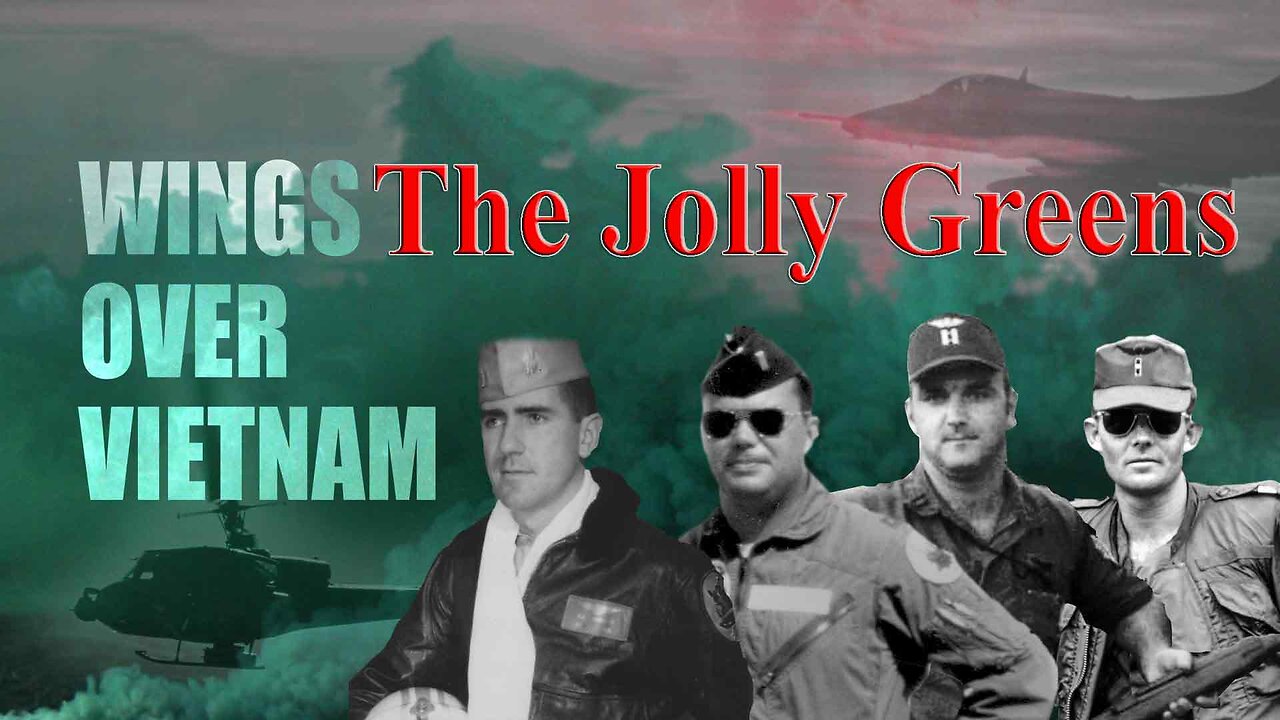Premium Only Content

The Jolly Greens | Wings over Vietnam
If you want to support our channel, I will be very grateful. PayPal: viktor3177@inbox.lv
Friends! If you liked this video, be sure to like and subscribe to the channel!
During the Vietnam War, the costly rescue of Bat 21 prompted the US military to find a new approach to searching and rescuing high-threat people. They recognized that if a SAR mission is doomed to fail, it should not be undertaken and other options must be considered, such as special operations, diversionary tactics, and other creative approaches tailored to the situation. Recognizing the need for an aircraft that could provide more effective close air support, the USAF introduced the A-7 Corsair, originally a Navy carrier-based light attack aircraft, to replace the Air Force A-1 Skyraiders, an aircraft that was also originally a carrier-based Navy strike bomber.
Thanks to CSAR's experience in Vietnam, the U.S. military has also improved the nighttime capabilities of helicopters and area-denial munitions.
During the Vietnam War, US SAR forces saved 3,883 lives at the cost of 71 rescuers and 45 aircraft.
In 1972, during the Vietnam War, Lt. Col. Iseal Hambleton, a U.S. Air Force navigator and electronic warfare officer with ballistic missile and countermeasures experience, was the sole survivor of an EB-66 shot down during the Easter Offensive. He evaded capture by North Vietnamese forces until he was rescued 11.5 days later. During the rescue operation, five American military aircraft supporting the CSAR effort were shot down, eleven American service members were killed, and two men were captured. The rescue operation was "the largest, longest, and most complex search and rescue operation of the entire Vietnam War." Two books and the feature film “The Bat” are dedicated to him.
-
 2:57:09
2:57:09
TimcastIRL
5 hours agoCorporate Press Refuses To Mention Minneapolis Shooter Was Trans | Timcast IRL
170K88 -
 LIVE
LIVE
Akademiks
4 hours agoWar in RAT-LANTA. Young Thug vs Gunna vs Ralo vs YSL MONDO. Who Will Le Bebe Pick. FINAL CRASHOUT!
1,770 watching -
 1:02:24
1:02:24
Man in America
8 hours agoThe Final Battle: Nanotech, Transhumanism & the War for Your Soul w/ Dr. Ed Group
29.5K3 -
 39:56
39:56
Sarah Westall
2 hours agoUpcoming World Wide Economic Collapse/Deep Recession & What the Big Money is Doing w/ Ed Dowd
21.6K3 -
 2:52:55
2:52:55
Barry Cunningham
3 hours agoIT'S MOVIE NIGHT WITH BARRY!
34.5K23 -
 31:05
31:05
The Why Files
2 days agoPeru's Most Terrifying Mystery | The Face Peelers
40.3K41 -
 1:32
1:32
Gaming on Rumble
11 hours agoWhat is the Rumble Creator Program?!?! | Lvl UP
29.1K4 -
 1:50:49
1:50:49
Flyover Conservatives
23 hours ago9/11 on Steroids: What’s Coming This Fall? - Bo Polny | FOC Show
40.6K7 -
 1:01:28
1:01:28
Precision Rifle Network
9 hours agoS4E27 Guns & Grub - Let's Talk About Gas Guns
21.8K1 -
 59:29
59:29
The Charlie Kirk Show
5 hours agoTHOUGHTCRIME Ep. 96 — The Great Flag Burning Debate
48.5K34